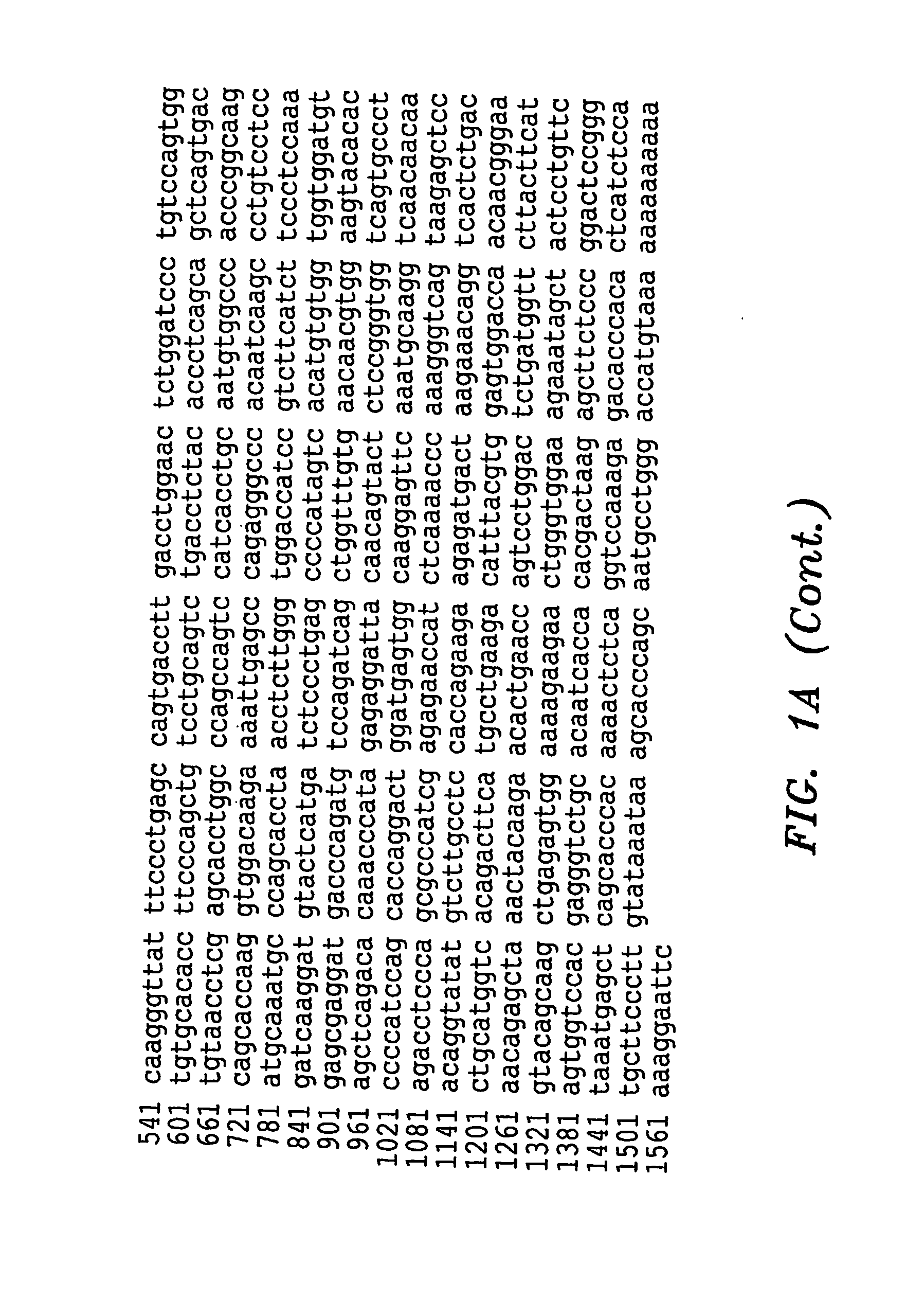De-Immunized Anti-Cd3 Antibody
a technology of anti-cd3 antibody and anti-cd4 antibody, which is applied in the field of gene engineered antibodies, can solve the problems of inapplicability of processes, unpredictable effects of humanization of non-human antibodies on antibody-antigen interactions, and severe limits to the dosing potential of anti-cd3 antibodies, and achieve the effect of reducing the immunogenicity of proteins
- Summary
- Abstract
- Description
- Claims
- Application Information
AI Technical Summary
Benefits of technology
Problems solved by technology
Method used
Image
Examples
example 1
De-immunized, Chimeric Anti-CD3 Antibody
[0056] A de-immunized, chimeric anti-CD3 antibody was prepared. The variable regions selected were derived from the known mouse anti-human CD3 antibody OKT3. The variable regions were de-immunized and combined with an engineered human constant region to prepare the chimeric, de-immunized anti-CD3 antibody. The procedures used to prepare and test the chimeric, de-immunized anti-CD3 antibodies are described below.
[0057] The murine OKT3 heavy and light chain variable regions were constructed synthetically by gene synthesis using overlapping 40 mer oligonucleotides and a polymerase chain reaction. The sequences of the heavy and light chain variable regions of this antibody have been previously determined and deposited in the GenBank database (Accession numbers A22261 and A22259 respectively; see FIG. 1). Sequences, including the murine immunoglobulin promoter and a murine signal sequence with intron, were added at the 5′ ends, and sequences inc...
PUM
| Property | Measurement | Unit |
|---|---|---|
| Immunogenicity | aaaaa | aaaaa |
| Light | aaaaa | aaaaa |
Abstract
Description
Claims
Application Information
 Login to View More
Login to View More - R&D
- Intellectual Property
- Life Sciences
- Materials
- Tech Scout
- Unparalleled Data Quality
- Higher Quality Content
- 60% Fewer Hallucinations
Browse by: Latest US Patents, China's latest patents, Technical Efficacy Thesaurus, Application Domain, Technology Topic, Popular Technical Reports.
© 2025 PatSnap. All rights reserved.Legal|Privacy policy|Modern Slavery Act Transparency Statement|Sitemap|About US| Contact US: help@patsnap.com



